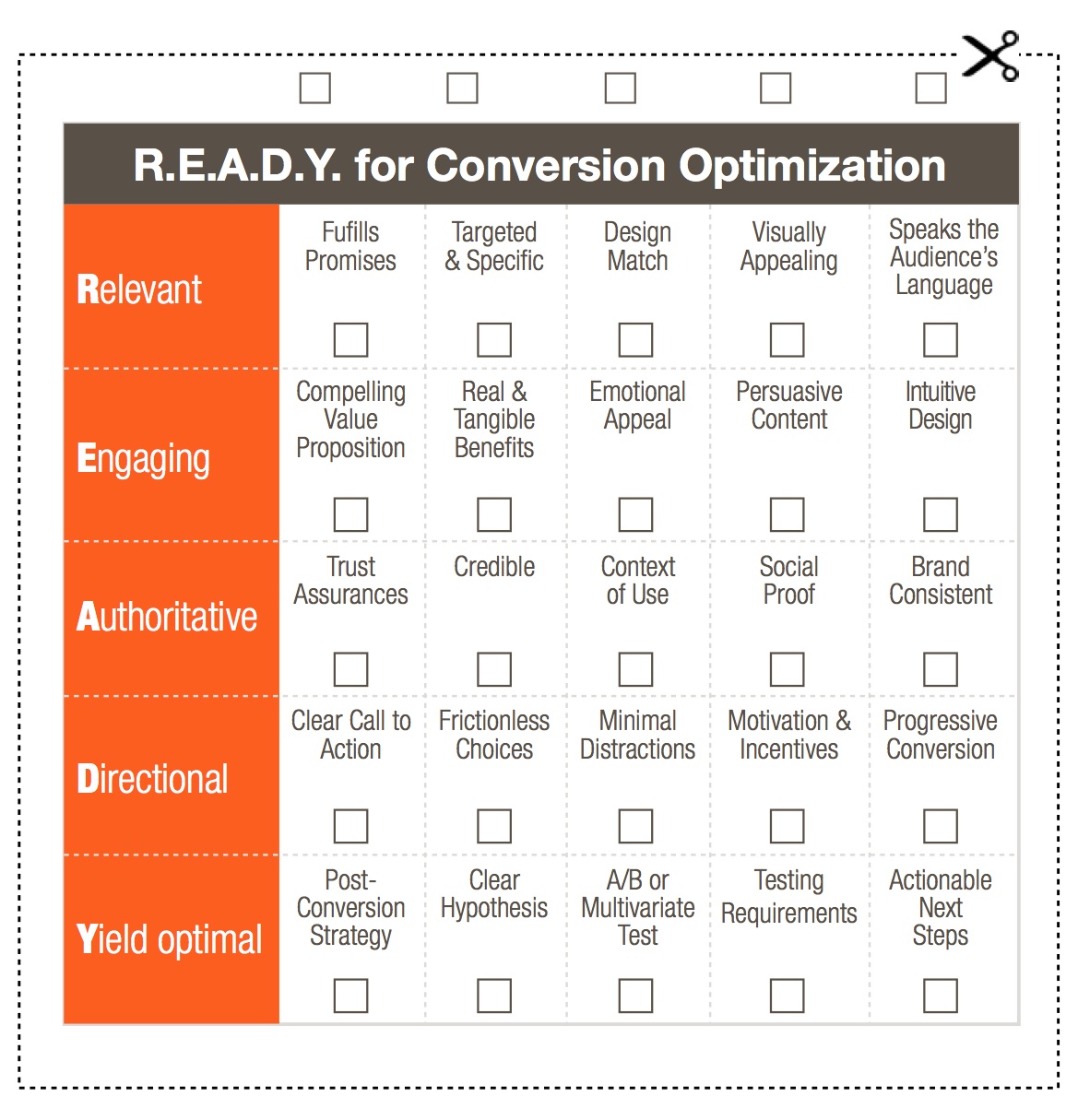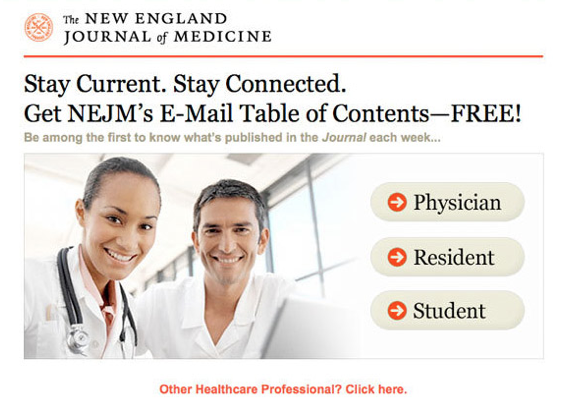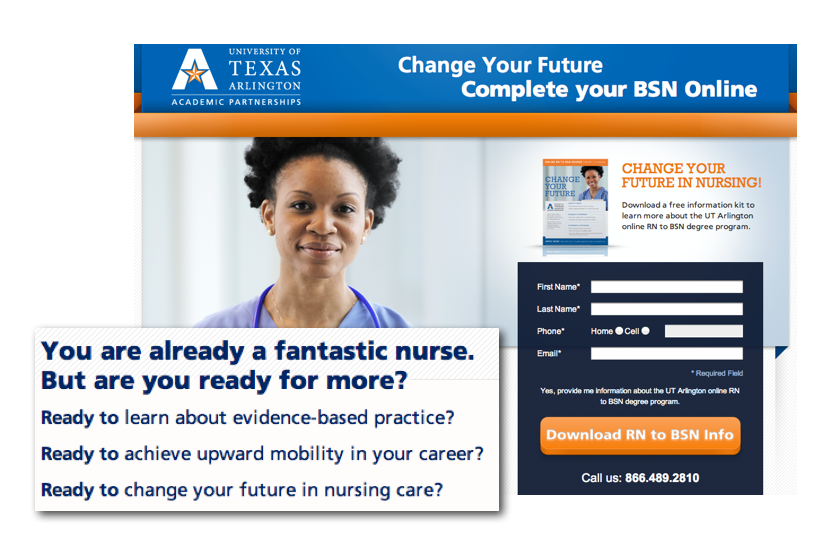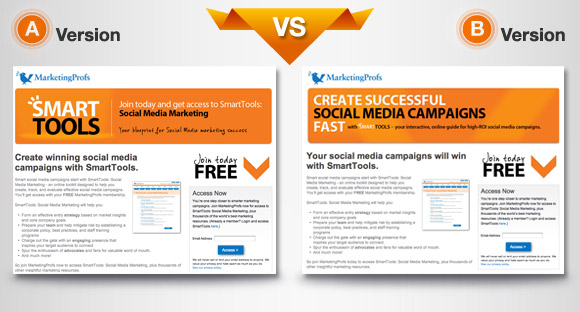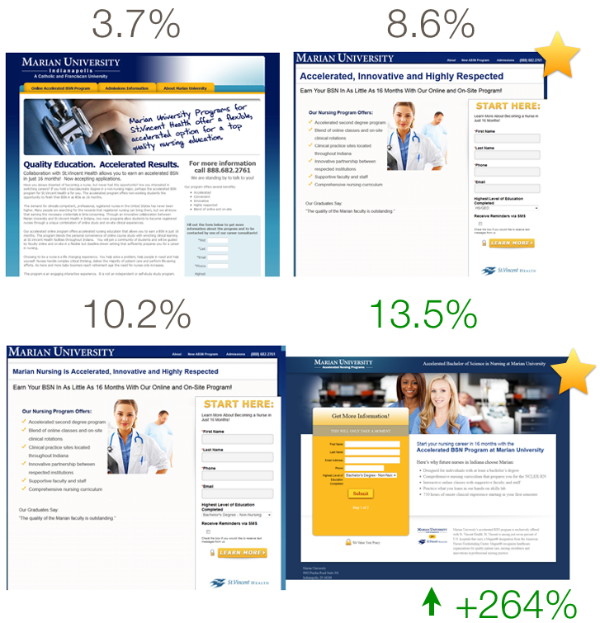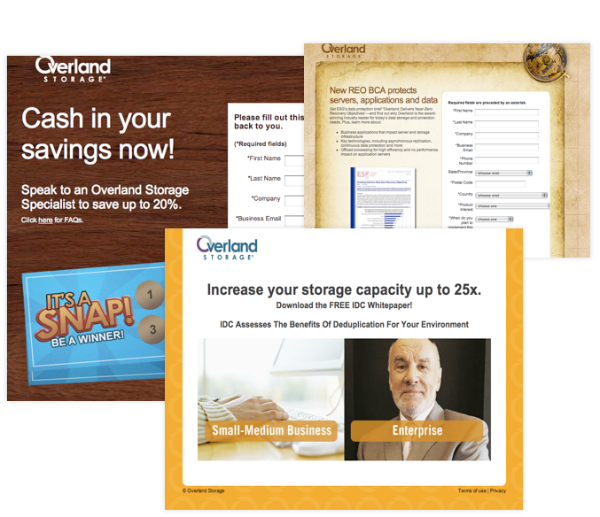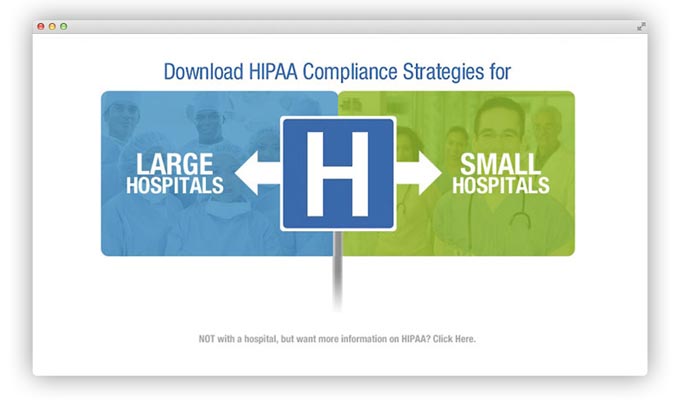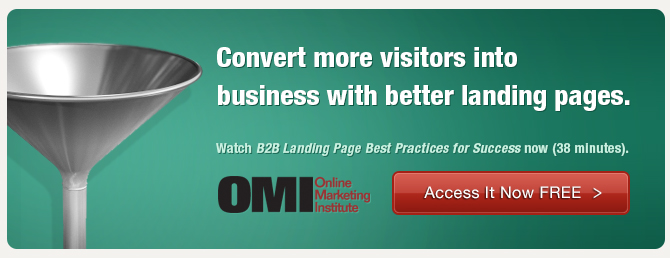Need landing page testing inspiration? You've come to the right place. Below, you'll find 25 elements to test within any landing experience — homepage, product page, landing page or mobile-optimized experience. Whether you are launching your first A/B test or your 100th, you can use this 25-point framework to inspire new testing ideas, hypotheses and actionable next steps for optimization. Best of all, you can keep it handy with this downloadable R.E.A.D.Y. framework. So print it, pin it, and use it to stay focused on what’s most important in driving conversions.
1. Message match.
Test your headline to improve message match and engagement. Check out: 5 Types of Headlines to Test on Your Landing Page for more headline testing ideas.
2. Targeting
Test a conversion path to help identify and provide targeted copy to your visitors. A conversion path is a conversion-focused, linear landing experience, specifically designed to catch and convert incoming traffic from your online marketing campaigns. In the example below, visitors self-segment and receive highly-targeted messaging.
The simplicity of this kind of landing experience makes visitors want to click, and makes it easy for visitors to self-identify. The headline is catchy, benefit-driven and leads the visitor into segmenting with a strong offer statement. This type of test is especially useful for high funnel keyword searches.
3. Design match.
est a more visually cohesive experience from your email or banner to your landing page. Don't worry, redundancy is appreciated, rather than excessive in this instance.
4. Visuals
Test people imagery versus product imagery. Test directional cues — both implicit (direction of gaze, color, etc.) and explicit (arrows, curves, etc) to help guide visitors towards the desired action. Test icons against photography. Test, test, test.
5. Language
It is important to play to audience identity. Test tailoring your pages to the characteristics of the people who visit. The University of Texas Arlington uses authentic nurse imagery, job-specific terminology and “you” language to provide a highly relevant experience to their target audience.
6. Value proposition
Probably the single most valuable element to test. Your value proposition answers the questions "why should I buy from you instead of them?" Creating a list of features is easy, but great landing page copy sells visitors on benefits, not features. One of the first techniques you can explore is transforming your major features into benefits. Write down your top five features and ask yourself, “what problem does this feature solve for our customer?” Then, test each as your headline.
7. Real & tangible benefits
See above! In this A/B test, a benefit-focused headline (version B) drove 28% more email signups than the page with the product-focused headline (version A).
8. Emotional appeal
Incorporate a story, an insight, a mood into your messaging.
9. Persuasive content
Focus specifically on why users need your product or service.
10. Design
Radically re-imagine the user experience, focusing on intuitive, user-centered design that communicates value. Marian University lifts conversion rates over 264% with radical landing experience redesigns.
11. Trust assurances
Test the impact of adding a telephone number to your page (if it isn't there already) or test placement and visual emphasis of customer-centric policies (100% satisfaction guarantee) and trust marks (BBB, Truste, Verisign, etc.)
12. Credibility
Test using specific numbers and verifiable facts instead of fluffy claims
13. Context of use
Provide evidence of how a product or service solves a real problem. Test showing your product in the hands of a user. Test a product video or a virtual tour.
14. Social proof
Social proof comes in many shapes and sizes — expert, celebrity, user, and wisdom of crowds and wisdom of friends. Expert proof relies on the expertise, education or approval from a credible source. Celebrity endorsements can obviously yield high impact social proof, especially if unpaid. The only way to know what resonates with visitors and drives engagement is to test.
15. Brand consistency
Definitely a best practice, but something that can be tested as well (especially if you are creating campaign landing pages). Test a standard brand look and feel against a campaign-specific look and feel. Check out some of my favorite campaign-themed conversion paths from Overland Storage.
16. Call-to-Action
CTAs are definitely low-hanging fruit. Minor tweaks to button design and copy can result in conversion lifts. If you are offering content (white papers, webinar, guides) in exchange for lead information, you should test different offers to see what content drives the most (and the most qualified leads).
17. Choices
Executed properly, post-click segmentation reveals people’s preferences, intentions, and audience segments. Test providing a small number of choices that are mutually exclusive and collectively exhaustive. A good example of a proper MECE segmentation would be this landing page for Citrix, for people responding to HIPPA-compliant IT advertisements in the health care industry.
18. Removing distractions
Test simplified segmentation (see above). Test without navigation! Remove distractions, remove navigation.
19. Additional motivation or incentives
Test offering supplemental content as adding incentive.
20. Progressive conversion
Test breaking up your lead form into multiple steps. This works especially well for long or tedious forms. Don't forget to pay off each step with relevant and useful information.
21. Post-conversion engagement
Test micro-conversions on your thank you page. Provide relevant content, links to additional information, social sharing or an upsell to see if you can further engage and build rapport post-conversion.
22. Data-driven hypotheses
Use data to uncover potential testing opportunities and establish concrete hypotheses. Every test plan should include data that supports your testing hypothesis.
23. A/B & MVT testing
If you are still practicing sequential testing, please stop now. You need a testing platform for split testing. There are too many variables that can affect the results of sequential tests. The only way to test is to do it in real-time. Check out our Buyer's Guide to help find the right testing platform for you.
24. Putting testing requirements in place
Make sure to put testing requirements in place. Whether it be a minimum level of statistical confidence, or a test timeframe, make sure you are setting yourself up for testing success: concrete hypothesis + testing requirements + a/b testing tool = analysis-driven next steps.
25. Analysis-driven next steps
Piggybacking off of data-driven hypothesis testing, analysis-driven testing is based on behavioral data and analysis of "click behavior." You can test your gut, but data-driven next steps are often the most successful.
Learn how to drive more conversions with better landing pages.
Watch the tutorial—B2B Landing Page Best Practices for Success—and discover proven techniques for creating and optimizing high-converting B2B landing pages. Access it FREE with a 7-day trial to the Online Marketing Institute. Activate trial now.
